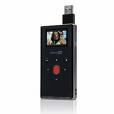The evolving story of the attack on Ian Tomlinson illustrates lots of things, many of them disturbing. For example, when did police officers on public duty start wearing balaclavas — as the guy who attacked Mr Tomlinson was? On the face of it, just about the only upside is the fact that citizens now have tools (cameraphones, small digital cameras and camcorders) which enable us to monitor and record the behaviour of police officers and other officials. If we’d had the same tools thirty years ago, the police officer who murdered Blair Peach, and the colleagues who covered up for him, might have been identified and maybe prosecuted.
So three cheers for the tools of citizen journalism? Celebrations might be premature. I suspect that the ‘system’ will not take this lying down. Since 9/11 we’ve seen extraordinary official repressiveness towards amateur photographers (see e.g. this post) trying to take photographs in what are clearly public places.
So here’s a prediction. We will see an adaptation of the time-honoured practice of stopping coaches bound for London-based demonstrations and searching everyone on board for ‘offensive’ weapons like bottles, marbles, ball-bearings, pepper, etc., all of which are then arbitrarily confiscated. The definition of ‘offensive’ will be extended to any electronic device capable of recording events. No doubt there is already a clause in the Public Order Acts which can be used to justify this. And if there isn’t, then I’m sure the Minister of the Interior, Jacqui Smith, can provide a Ministerial Order that will do the trick. After all, for a UK government with a big majority to get intrusive measures through Parliament is almost as straightforward as ordering ‘adult’ videos from Virgin.

